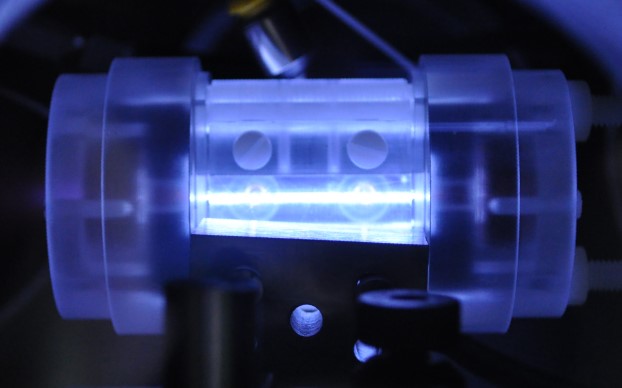
Professor Bernhard Hidding, from the Cockcroft Institute and University of Strathclyde, has been awarded more than €2 million by the European Research Council (ERC), for a project aiming to develop next-generation plasma-based electron beam sources for photon science and high-energy physics.
The project, named NeXource, led by Professor Hidding, is one of around 300 successful applications for grants from the prestigious ERC’s Consolidator Grant programme, from a total of 2453 submissions.
The funding will enable Professor Hidding and his team of University of Strathclyde to develop electron beam sources that are potentially 100,000 times brighter than conventional sources. Such bright electron beams are required to power x-ray lasers as enabling tools for photon science, as they allow making snapshots of ultrafast molecular and atomic processes.
The research will use key Cockcroft Institute facilities such as SCAPA and CLARA to develop plasma wakefield accelerator prototypes.
Professor Hidding said: “Plasma wakefield accelerator devices have electric fields 1000 times stronger than those of state-of-the-art accelerators and are far smaller – measured in metres rather than kilometres.
“The quality and controllability of electrons produced by such accelerators so far is limited. NeXource will exploit the huge electric plasma wakefields as ultrabright electron source by realizing laser-based plasma photocathodes. This allows realization of tunable beam brightness transformers capable of improving output beam levels of emittance and brightness by orders of magnitude.
“The aim, with the use of this ERC Consolidator Grant, is to provide a basis to transform photon science by creating entirely new capabilities and boosting capacities arising from such electron beams. On the longer term, such brightness transformers could become accessible even at university-scale labs.”
ERC Consolidator Grants are awarded to outstanding researchers of any nationality and age, with at least seven and up to 12 years of experience after PhD, and a scientific track record showing great promise.
Mariya Gabriel, European Commissioner for Innovation, Research, Culture, Education and Youth, said: “Knowledge developed in these new projects will allow us to understand the challenges we face at a more fundamental level, and may provide us with breakthroughs and innovations that we haven’t even imagined.”
The Cockcroft Institute’s partner University of Strathclyde has protected the intellectual property underlying the NeXource project and is commercialising the technology in collaboration with industry.
